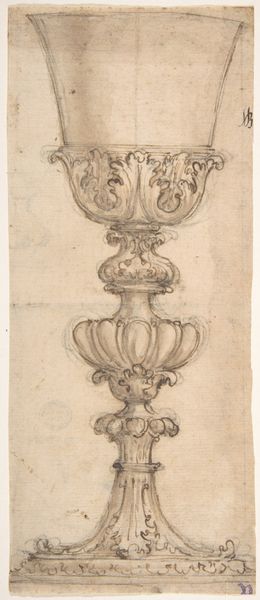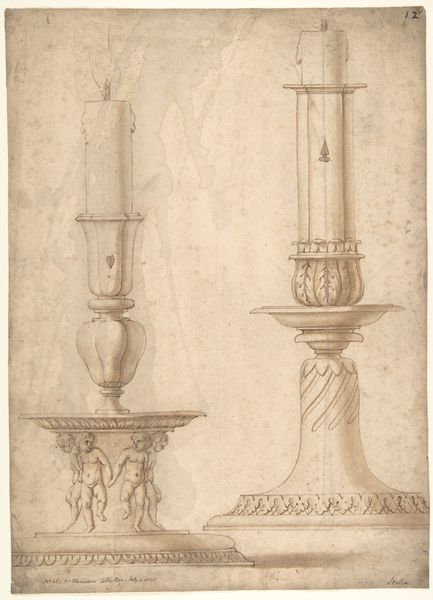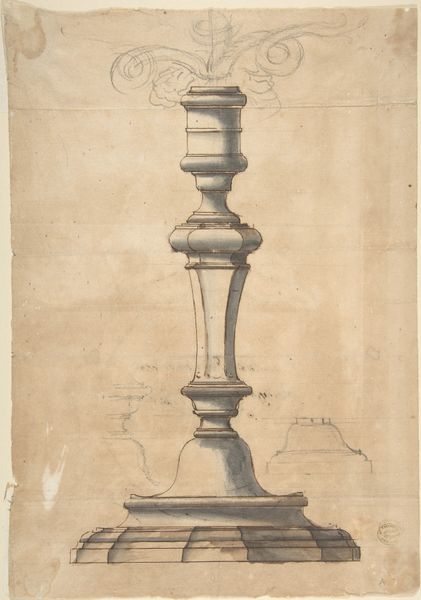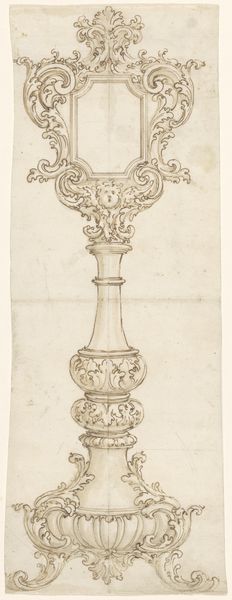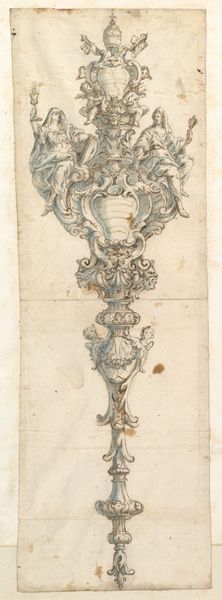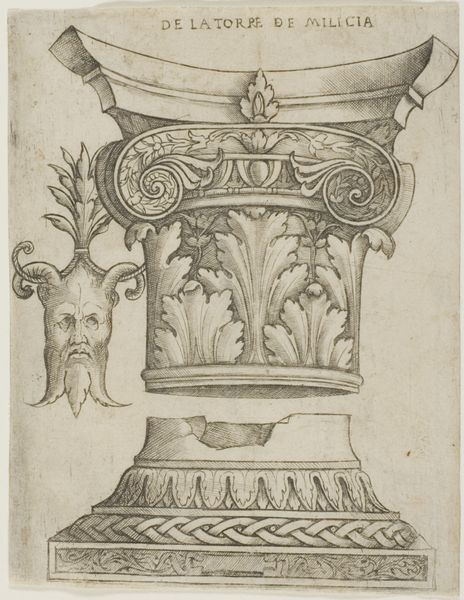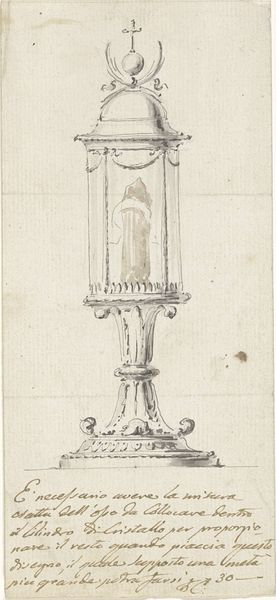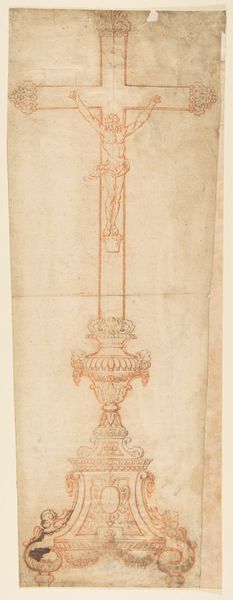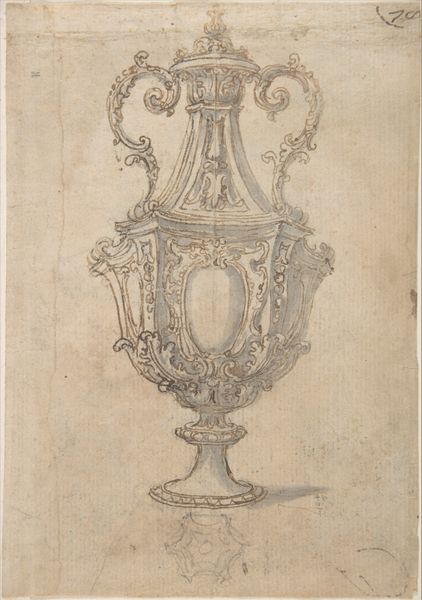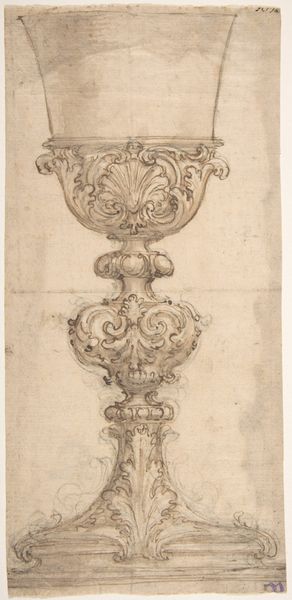
Design for a Rattle and Whistle (recto); Crude Sketches of an Equine Animal and a Figure in Exotic Costume (verso) 1500 - 1600
0:00
0:00
drawing, pencil
#
drawing
#
11_renaissance
#
pencil
#
musical-instrument
#
italian-renaissance
Dimensions: 8-3/16 x 3-13/16 in. (20.8 x 9.7 cm)
Copyright: Public Domain
Curator: What strikes me immediately is the ornamental quality of the design; there's a delicate balance of line and form. Editor: We're looking at "Design for a Rattle and Whistle," created sometime between 1500 and 1600 by an anonymous artist, currently held at the Metropolitan Museum of Art. It’s a pencil drawing on paper. What purpose might such a finely wrought instrument have served? Curator: I am interested in how this work exemplifies Renaissance sensibilities applied to an everyday object. Notice the way the simple utility of the whistle form is elevated with the addition of complex ornamentation, from the bulbous top to the symmetrical adornments on the sides, emphasizing perfect geometry and control. It also appears to be a study piece— we can even see sketch marks along the paper's bottom. Editor: Certainly! The craft here reveals much about period instrument-making. Consider the economic factors that enabled such exquisite detail—what specific societal strata would use and appreciate, and pay for, this level of artistry? Furthermore, consider the labor involved, potentially specialized craftspeople involved in shaping wood, applying finishes and engraving? The luxury instrument reflects patronage and wealth accumulation during this period. Curator: But observe how the drawing itself transcends its utilitarian subject matter. The artist isn't simply documenting an object; he is exploring volume, texture, and shadow through the limited means of pencil on paper. I wonder what materials might have realized the intended work, because those shapes hint towards carved wood or molded metal. Editor: I'm also wondering if the object ever actually made the transition to a physical product— how does its presence on paper impact its value and legacy? Would the economic systems support reproducing an intricate rattle, making this a study that could exist outside the constraints of physical production? Curator: Perhaps the artist or patron found aesthetic fulfillment in the design, seeing little need for actual fabrication. The perfection in the rendering becomes its own reward. Editor: Ultimately, the dialogue between design and societal frameworks renders new understandings of cultural creation. We examined the Renaissance aesthetic impulses, considering patronage structures which supported artisans and production of non-utilitarian instruments. Curator: An exploration into how abstract concepts and tangible craft coalesce during an era defined by innovation and luxury!
Comments
No comments
Be the first to comment and join the conversation on the ultimate creative platform.
